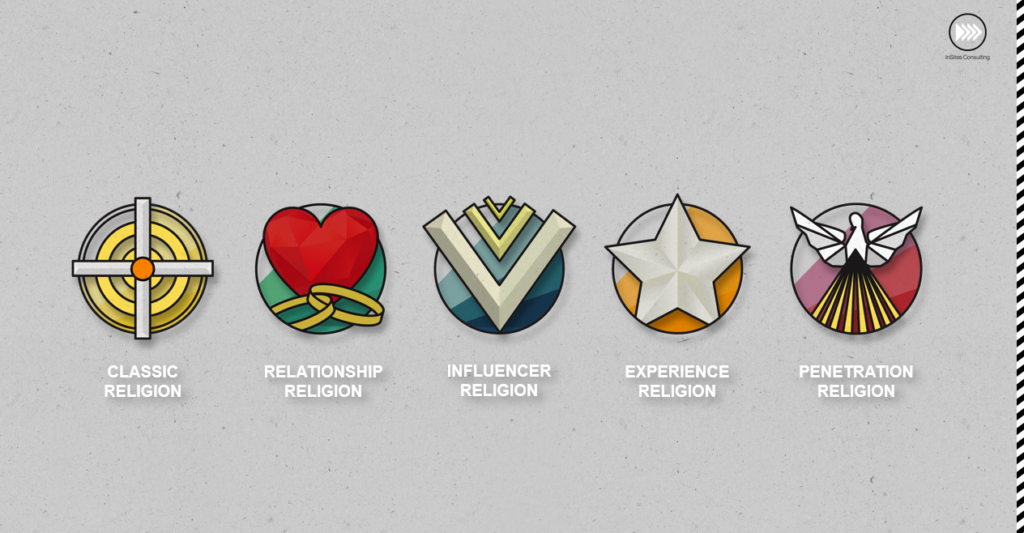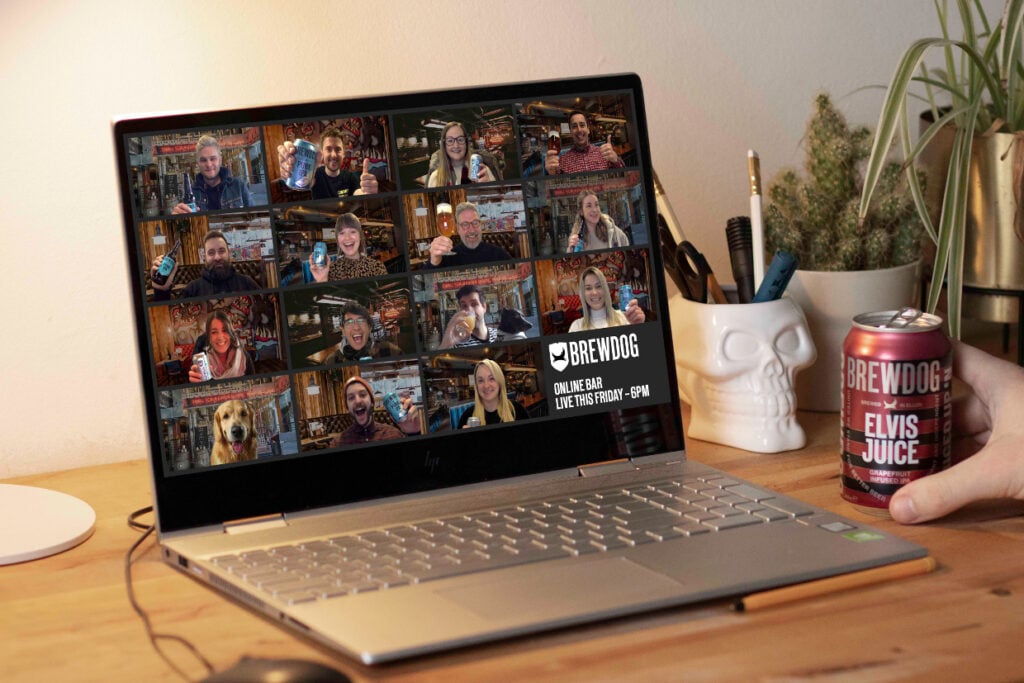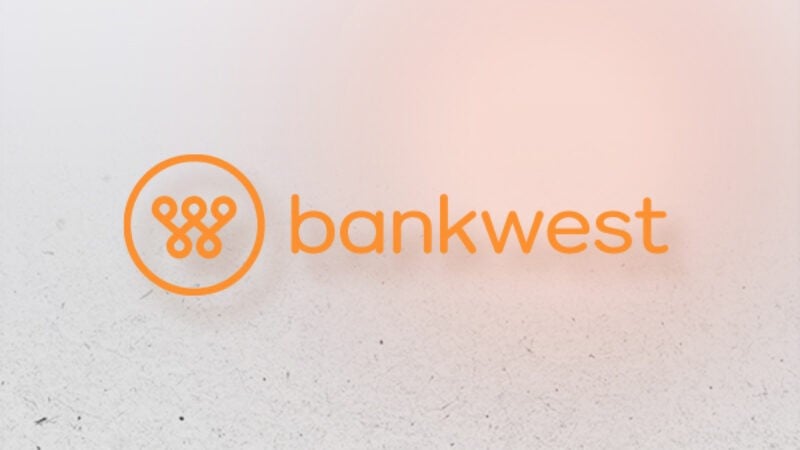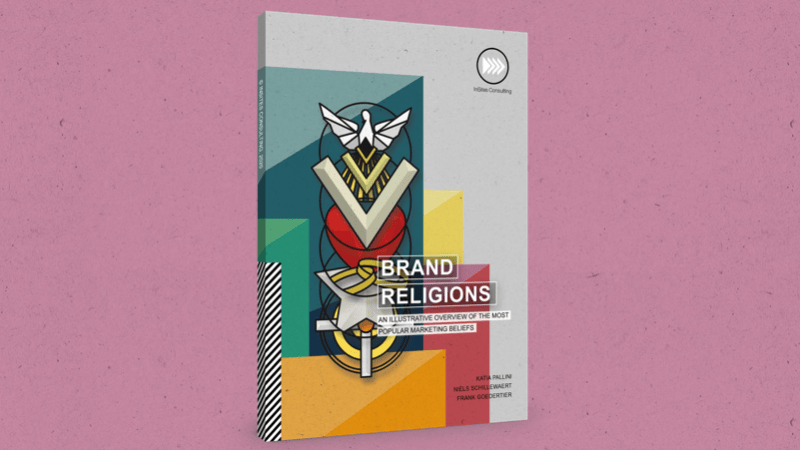Are you losing your brand religion?
Should brands go mute, or should they rather raise their voice louder than ever? What is the appropriate time to (re)start brand activation efforts? How can we stay close to our brand identity whilst creating consumer relevance?
Since the early days of marketing, there has been a continuous quest for the holy grail of brand success. The worldwide pandemic has amplified these brand challenges, with marketers and brand owners trying to navigate their brands through these uncertain times.
Branding isn’t (and will never be) an exact science. Many books have been written presenting theories and frameworks on how to grow strong brands, often confusing marketers and brand owners as to which strategy to pursue. Yet in this abundance of visions and beliefs, focus is needed. Especially in today’s fickle times, brands should choose and follow a ‘brand religion’. A religion is a line of thinking and ‘a pursuit or interest followed with great devotion’. Just as this definition stipulates, brands can benefit from choosing a brand strategy framework to guide them in everything they do.
The 5 Brand Religions
The foundation of modern marketing lies in what we could label as the ‘Classic Religion’, which emphasizes the importance of STP (Segmentation, Targeting, Positioning) and brand differentiation. Although still valuable today, this school of thought has been challenged by new theories and beliefs. The ‘Influencer Religion’, for instance, focuses on the role of word of mouth, while devotees of the ‘Relationship Religion’ dedicate their efforts to building a long-lasting emotional connection with consumers. The ‘Experience Religion’ in its turn is all about building memorable experiences. Lastly there is the ‘Penetration Religion’ which challenges the classic thinking by introducing new marketing laws that focus on market penetration through mental and physical availability.

A clear brand-religion focus (which can be one of the above or a complementary mix of them) provides marketers and brand owners with a clear outline of branding dos and don’ts. Yet, in times of disruption, keeping that focus can be hard, with many brands switching strategies or simply going mute as a panic reaction. But this is exactly when it is important for brands to stay true to their core and (re)act in line with their strategic focus. It is important for brands not to lose their religion.
Multinational brewery BrewDog’s mantra has always been about creating outstanding consumer experiences (cf. ‘Experience Religion’). In 2010 they opened their first BrewDog bar, this quickly ‘escalated’ into initiatives like highest ever beer tasting on board of a plane. Yet with bars and pubs across the world closing temporarily, BrewDog had to come up with a solution to continue delivering great experiences. Within five days after closing their physical bars, BrewDog launched an interactive online bar, inviting consumers to participate in quizzes, live cook-alongs and yoga classes, or simply to listen to live music. Given the many positive reactions, BrewDog is considering to continue entertaining consumers in their virtual bar in post-lockdown times.

An example of a brand that is using the ‘Influencer Religion’ to demonstrate relevance during the pandemic is Milka. With millions of families confined to their homes, the chocolate brand realized Easter 2020 would not be characterized by the traditional Easter egg hunt. To raise brand awareness during this key consumption time, Milka invited Maxsialtele, a top Romanian game influencer, to recreate Milka’s iconic Alps in Fortnite and hide 15 virtual eggs. Promoting the campaign via Maxsialtele’s YouTube channel and Milka’s social channels resulted in 6 million impressions and 50,000 social interactions, with 98% of people reacting positively to the activation.
Whilst silence might seem louder than words, the opposite is true for brands. Consumers expect brands to keep a close connection and adapt to stay relevant. In doing so, a clear strategic focus is vital to define appropriate actions. For some, this may mean harnessing the power of their influencer network; others focus on strengthening the brand-consumer relationship, or revamp their logos and taglines to reflect reality. Consistency is key, and especially today it’s key not to lose your brand religion.
As each brand religion describes how to pursue growth, it also outlines how one should measure brand and communication performance. No two brands are the same, nor should they be measured the same way.





